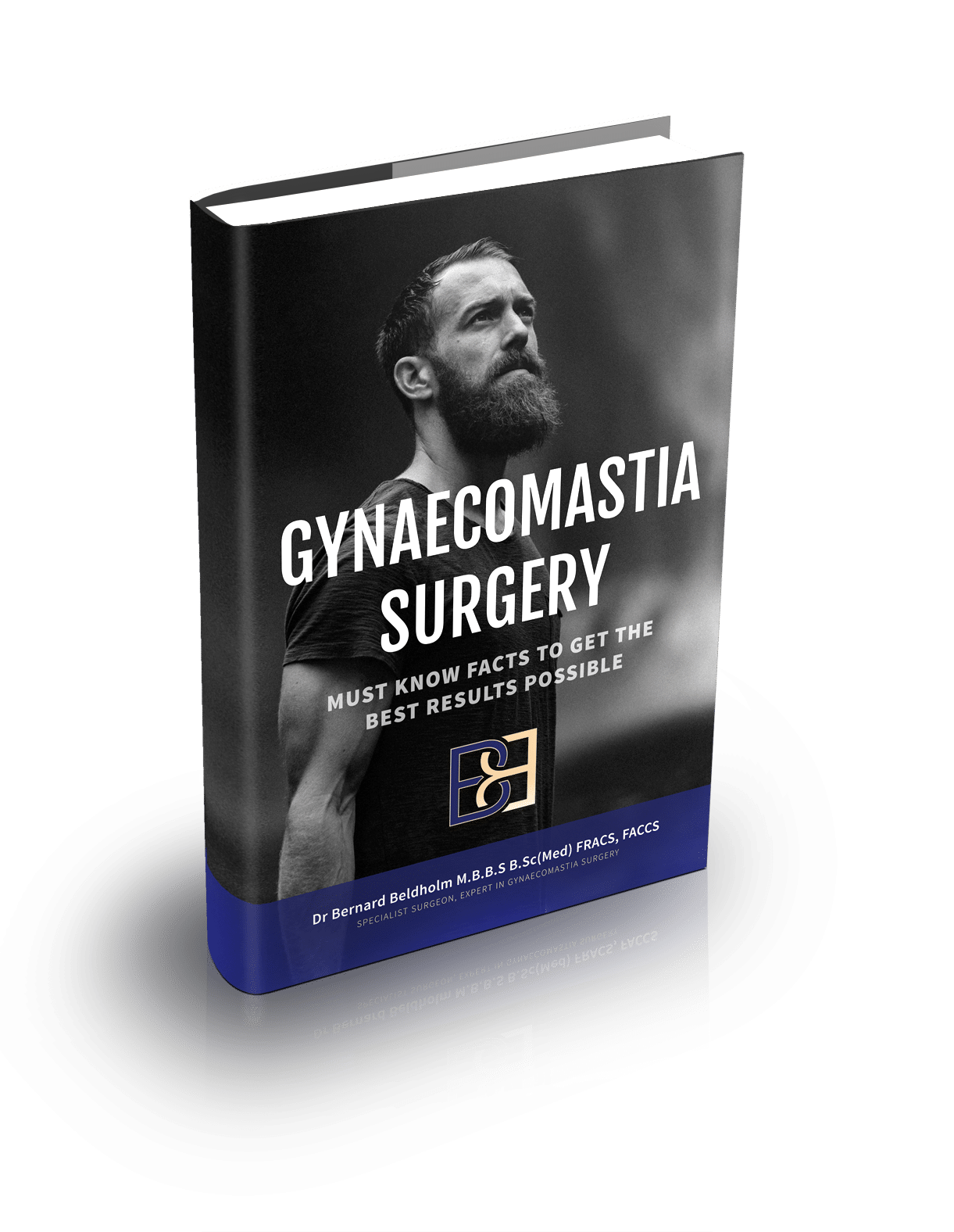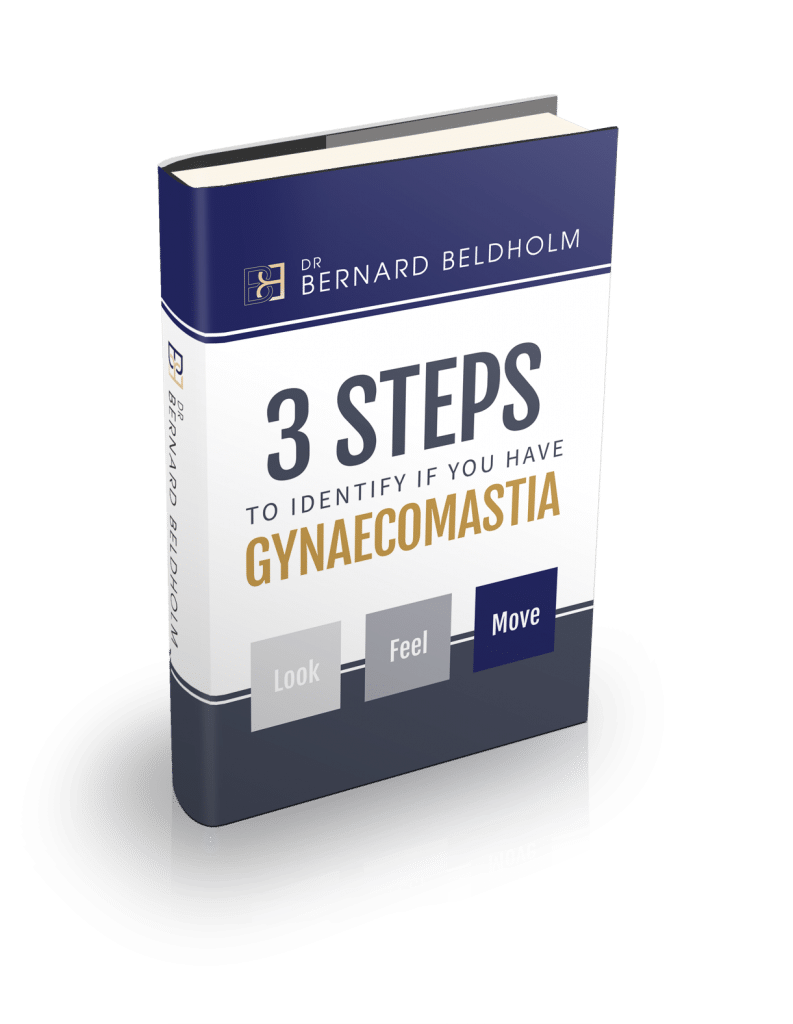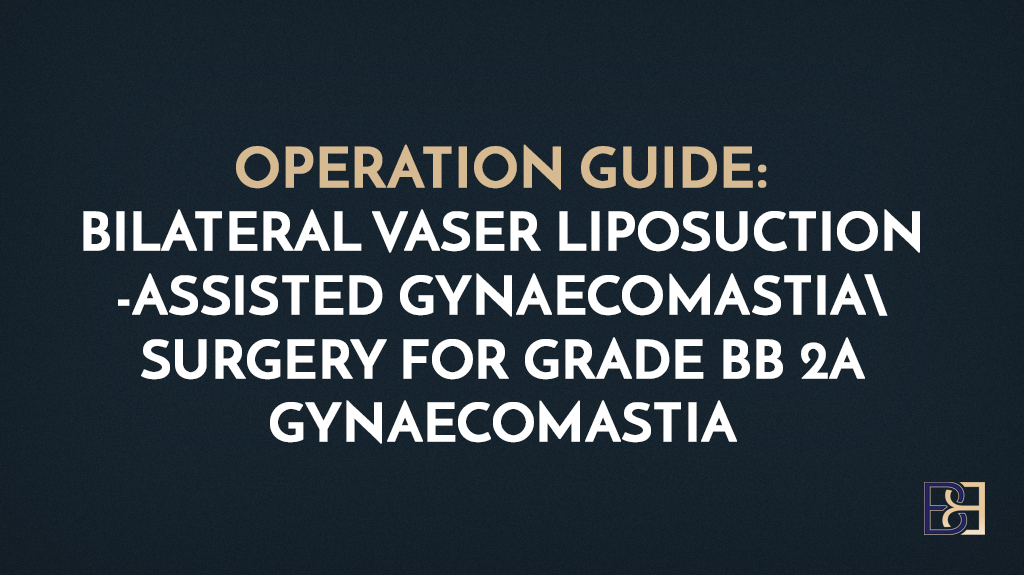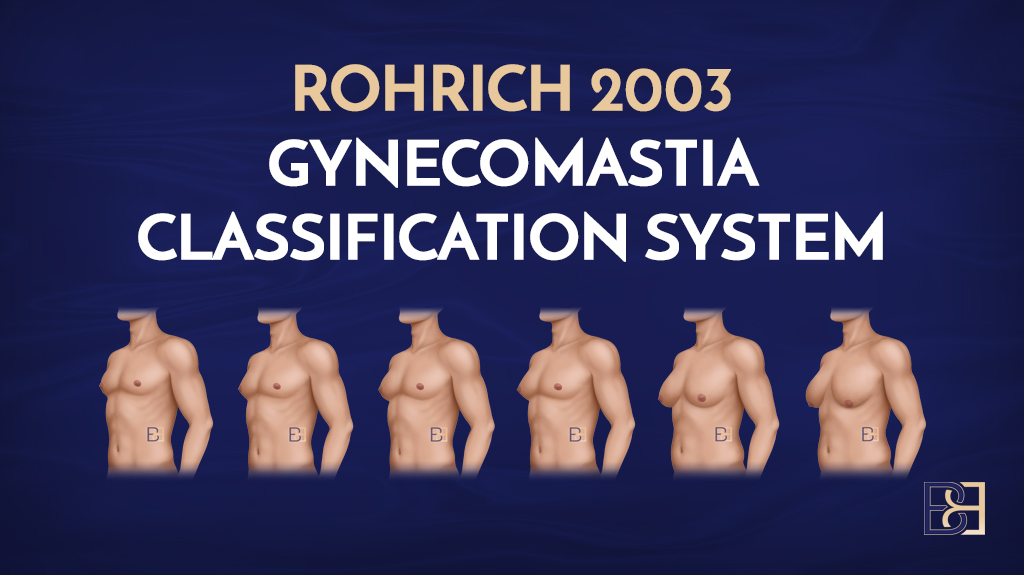Should I get into shape before gynaecomastia surgery? Yes, being in shape can ** your surgical results and speed up recovery. This guide will explain why physical fitness matters, how fat affects the surgery, and what you can do to prepare.
Key Takeaways
- Gynecomastia surgery combines liposuction and excision techniques to effectively reduce enlarged male breast tissue, with permanent results contingent on maintaining a healthy lifestyle post-surgery.
- Physical fitness before surgery, including structured exercise and proper nutrition, is vital for ** surgical outcomes, reducing complications, and facilitating ** recovery.
- Post-operative care, including the use of compression garments and gradual return to exercise, alongside long-term lifestyle changes, significantly impacts the durability of results from gynecomastia surgery.
Understanding Gynaecomastia Surgery

Book your appointment online now
Gynecomastia surgery, also known as male breast reduction surgery, aims to reduce enlarged male breast tissue caused by hormonal imbalances, weight gain, or genetics. The surgery typically combines liposuction and excision techniques to achieve a flatter male chest, which is a common procedure in plastic surgery.
Knowing the nature of this condition and the available treatments helps in making an informed decision about the procedure.
What is Gynaecomastia?
Gynaecomastia is a condition characterized by the enlargement of male breast tissue and is generally not serious.

Disclaimer: Operation performed by Dr Bernard Beldholm. Adult content, surgery has risks; individual results vary, seek 2nd opinion. Please see the full disclaimer.
Common symptoms often involve:
- lumps near the nipple
- swelling
- pain
- tenderness in the breast
These symptoms can cause discomfort and emotional distress, prompting many men to seek treatment.
The primary cause of gynaecomastia is hormonal imbalances, particularly between testosterone and oestrogen. This imbalance can result from various factors, including puberty, aging, medication use, and certain medical conditions. A comprehensive assessment by a healthcare professional is necessary to diagnose the condition accurately.
Male breast reduction surgery is typically recommended for individuals aged eighteen and above.This elective surgery is intended to eliminate excess tissue and ** a more masculine chest contour. ** the excess tissue through gynecomastia surgery can provide physical relief.
How is Gynaecomastia Treated?
When non-surgical options fail to ** persistent gynecomastia, male breast reduction surgery becomes the definitive treatment. Weight loss may be suggested initially if excessive fat contributes to the condition. Excess fat can complicate the surgical process, affecting the **.
A combination of liposuction and excision techniques is often used to tailor the male breast reduction procedure to the patient’s specific tissue composition. This approach ensures that both excess fat and glandular tissue are effectively removed, resulting in a flatter and more contoured chest.
The results of gynecomastia surgery are typically permanent, as the procedure permanently removes excess breast fat and tissues. However, maintaining a healthy lifestyle post-surgery is crucial to prevent recurrence. Weight loss initiatives can ** surgical outcomes and overall health, paving the way for a successful recovery and long-term **.
Importance of Physical Fitness Before Surgery

Physical fitness is a cornerstone of successful gynaecomastia surgery. Engaging in moderate exercise before the procedure is highly encouraged, though exhausting workouts should be avoided the night before to ensure energy for recovery. Avoiding harmful substances like smoking and alcohol is also essential for a healthy lifestyle.
These habits prepare your body for surgery and help maintain results afterward.
Benefits of Being in Shape
Incorporating both cardiovascular and strength training exercises can ** fat loss and muscular definition in the chest area. Cardiovascular exercises, such as running or cycling, combined with strength training, can effectively target chest fat and promote overall fitness. This approach helps achieve a more defined chest and ** overall health.
Following specific dietary recommendations can aid in weight loss and ** physical fitness before surgery. A balanced diet rich in lean proteins, fruits, and vegetables supports weight loss and muscle recovery. Hydration and adequate rest are critical pre-surgery, supporting recovery and overall health.

Being in good physical condition can lead to better surgical outcomes and ** recovery times. Staying well-hydrated and ensuring adequate sleep are essential factors for optimal physical condition leading up to surgery. These practices lead to a smoother recovery and better results.
Impact of Excess Fat on Surgery
Excess fat deposits can significantly affect surgical precision, resulting in less desirable aesthetic outcomes and potential for asymmetry. Surgeons may need to use more invasive techniques when ** gynecomastia in patients with significant excess fat. This can prolong the surgery and increase the risks of complications.
Excess fat can hinder tissue removal, leading to longer surgery times and higher risks of complications like excessive bleeding or infection. Excess fat may also increase risks of complications like seoma and delayed recovery.
Patients with significant excess fat might face longer surgery times, negatively impacting anesthesia and recovery. Recovery may be more challenging for these patients, resulting in a longer healing process. ** excess fat through weight loss before surgery can mitigate these risks and ** surgical outcomes.
Role of Weight Loss Programs
Structured weight loss programs can effectively guide patients to reach their ideal body weight prior to surgery. These programs often include personalized exercise plans and dietary guidelines that help individuals lose excess weight effectively. Achieving a healthy weight before surgery ** overall health and reduces potential complications.
Reaching an ideal body weight before surgery can lead to better surgical outcomes and a smoother recovery process. How much weight loss programs offer the structure and support to achieve and maintain a healthy weight, paving the way for successful surgery and long-term **.
Preparing Your Body for Surgery

Physical preparation is crucial for successful gynecomastia surgery. This includes creating a personalized exercise plan, following nutritional guidelines, and ensuring proper hydration and rest.
Creating a Personalized Exercise Plan
Patients are advised to focus on building chest muscles through tailored workout routines, but it is not necessary to exclusively target the chest. A personalized exercise plan helps reduce chest fat and ** overall health. Incorporating full-body workouts along with specific chest exercises can lead to more balanced muscle building and fat reduction.
A well-rounded exercise plan should include both cardiovascular and strength training exercises. This balanced approach not only targets chest fat but also ** overall fitness, setting the stage for a successful gynecomastia surgery and recovery.
Nutritional Guidelines for Optimal Results
Nutrition plays a crucial role in optimizing physical fitness and ** surgical outcomes. A well-rounded nutritional approach supports weight management and ** overall health, which is especially beneficial before undergoing any surgical procedure. A balanced diet should include a variety of fruits, vegetables, lean proteins, whole grains, and healthy fats to ensure an adequate intake of essential nutrients.
Limiting processed foods, added sugars, and high-fat snacks can significantly contribute to a healthier dietary pattern and facilitate losing weight. Adopting techniques such as portion control, meal prepping, and mindful eating can help in managing calorie intake effectively. Incorporating nutrient-dense snacks and meals can promote satiety while aiding in weight loss and retaining muscle mass.
These nutritional guidelines prepare your body for surgery and lay the foundation for a ** post-surgery lifestyle. Proper nutrition is key to achieving optimal results and ensuring a smooth recovery process.
Importance of Hydration and Rest
Staying properly hydrated is essential for maintaining optimal body function, especially before surgery. Adequate hydration ** circulation, reduces complications, and supports healing during recovery. Ensuring sufficient fluid intake in the days leading up to surgery can significantly ** overall surgical outcomes.
Rest is equally important, as it allows the body to recover from any pre-existing conditions and be in its best state for surgery. Proper hydration and sufficient rest ** surgical outcomes and speed up recovery. Focusing on these aspects of pre-surgery preparation can lead to more successful surgery and ** recovery.
Medical Evaluations and Consultations
A thorough medical evaluation is crucial for determining candidacy for gynaecomastia surgery. This includes an initial consultation with a specialist surgeon, required blood tests, and discussing anesthesia options.
These steps ensure optimal health before the procedure.
Initial Consultation with a specialist surgeon

During the initial meeting, discussing cosmetic goals and managing expectations is crucial for successful outcomes. Discussing expectations and fitness goals with the surgeon during the first visit is essential. Clear communication of goals between patient and surgeon is linked to successful outcomes.
Evaluating the most suitable procedure and understanding the surgery cost are also important aspects of the initial consultation. This meeting ** concerns and ensures the chosen procedure aligns with the patient’s aesthetic goals.
Required Blood Tests and Health Assessments

Undergoing required blood tests and health assessments is an essential part of the pre-surgery process. These tests help evaluate your overall health and ensure no underlying conditions could complicate the surgery. Common assessments include blood tests to check for underlying health issues that may affect surgery, such as blood clotting disorders or metabolic imbalances.
Patients who maintain good physical fitness before surgery often experience lower complication rates. Excess fat can interfere with surgical precision, leading to longer surgery and increased post-operative complications.
Thus, these health assessments are crucial for a ** and effective procedure.
Discussing Anaesthesia Options

The anesthesia options typically considered for gynaecomastia surgery is a general anaesthetic. There are many different types of general anaesthesia. The choice of anaesthesia depends on the extent of the surgery and the patient’s health status. During the consultation, Dr. Beldholm will discuss which option is best suited for your specific case, taking into account the surgical technique and individual patient factors. Discussing anaesthesia options with Dr Beldholm is essential for a smooth and ** experience.
Post-Surgery Recovery Tips

Careful planning and adherence to guidelines are required for optimal healing and results after gynaecomastia surgery. Incorporating regular physical activity helps in sustaining fitness levels and supports overall health post-surgery.
A nutritious diet and effective pain management aid in recovery.
Managing Pain and Discomfort

Patients may experience tenderness and numbness in the chest area during the first few days after surgery. Pain medications and antibiotics are generally prescribed to facilitate a smoother recovery. Effective pain management involves medication, proper sleep positioning, and understanding initial recovery.
Sleeping on your back or side with your head elevated using pillows is recommended after gynaecomastia surgery. This helps reduce swelling and discomfort while promoting better healing. Following these guidelines helps most patients manage pain effectively and ensures smoother recovery.
Wearing Compression Garments
Compression garments should be worn continuously for four weeks to help reduce swelling. These garments play a crucial role in aiding recovery following gynaecomastia surgery by supporting the healing process and minimizing post-operative swelling.
Compression garments aid in swelling reduction and promote better surgical outcomes. By providing consistent pressure to the chest area, these garments help in shaping the new chest contour and ensuring a smoother healing process.
Gradual Return to Exercise
Patients should avoid any strenuous activities for at least two weeks following surgery. Light walking can be resumed after approximately two days post-surgery. A gradual return to exercise is crucial for ensuring a ** recovery after gynecomastia surgery.
Following your surgeon’s advice on physical activities is essential for proper healing and recovery. Gradually reintroducing exercise helps maintain fitness levels without compromising healing.
Lifestyle Changes for Long-Term Success

Male breast reduction results are permanent with a maintained healthy lifestyle. Weight gain can cause remaining breast fat cells to expand, potentially altering the results.
Thus, adopting lifestyle changes supports long-term success.
Maintaining a Healthy Weight
Maintaining a healthy weight minimizes complications and ensures successful post-surgery outcomes. Weight gain or loss can lead to changes in breast tissue, which may result in the recurrence of gynaecomastia. A balanced diet and regular physical activity are essential for maintaining a stable weight after surgery.
Structured weight loss programs help manage weight effectively and prevent future complications. Mindful caloric intake and an active lifestyle play a vital role in long-term weight management and overall health, helping individuals lose weight.
Regular Exercise Routine
Regular exercise is crucial for maintaining overall physical fitness, especially around gynaecomastia surgery. Creating a personalized exercise plan tailored to individual needs can effectively reduce chest fat and ** overall health.
After surgery, a gradual return to exercise ensures proper recovery and avoids complications. Regular exercise maintains a healthy weight and helps prevent gynecomastia recurrence.
Balanced Diet and Nutrition
A nutritious diet sustains weight loss and prevents the re-emergence of breast tissue in gynecomastia patients. A well-rounded diet, especially rich in fruits and vegetables, prevents weight gain after surgery.
A balanced diet rich in essential nutrients supports overall health and maintains surgical results. This approach ensures that you remain at your ideal body weight and continue to enjoy the benefits of your male breast reduction surgery.
Summary
In summary, getting into shape before gynaecomastia surgery can significantly ** your surgical outcomes and recovery process. By understanding the importance of physical fitness, following a personalized exercise plan, adhering to nutritional guidelines, and ensuring proper hydration and rest, you can prepare your body for the procedure and achieve the best possible results. Embracing these lifestyle changes not only supports your surgery but also sets the foundation for long-term health and well-being.
Frequently Asked Questions
What is gynaecomastia?
Gynaecomastia is an enlargement of male breast tissue caused by hormonal imbalances, genetics, or weight gain. This condition can affect ** and body image.
How is gynaecomastia treated?
Gynaecomastia is effectively treated with male breast reduction surgery, utilizing a combination of liposuction and excision techniques to remove surplus tissue and fat. This procedure can provide a ** resolution for individuals seeking to ** this condition.
Why is physical fitness important before gynaecomastia surgery?
Physical fitness is crucial prior to gynaecomastia surgery as it ** surgical outcomes, accelerates recovery, and minimizes the risk of complications. Being in good shape can significantly contribute to a smoother surgical experience and better overall results.
What role do weight loss programs play in preparing for gynaecomastia surgery?
Weight loss programs play a crucial role in preparing for gynecomastia surgery by aiding patients in reaching their ideal body weight, thereby ** surgical outcomes and minimizing complications.
How can I maintain the results of my male breast reduction surgery?
To maintain the results of your male breast reduction surgery, it is crucial to maintain a healthy weight, engage in regular exercise, and follow a balanced diet. These practices will help ensure that the results are sustained over time.






